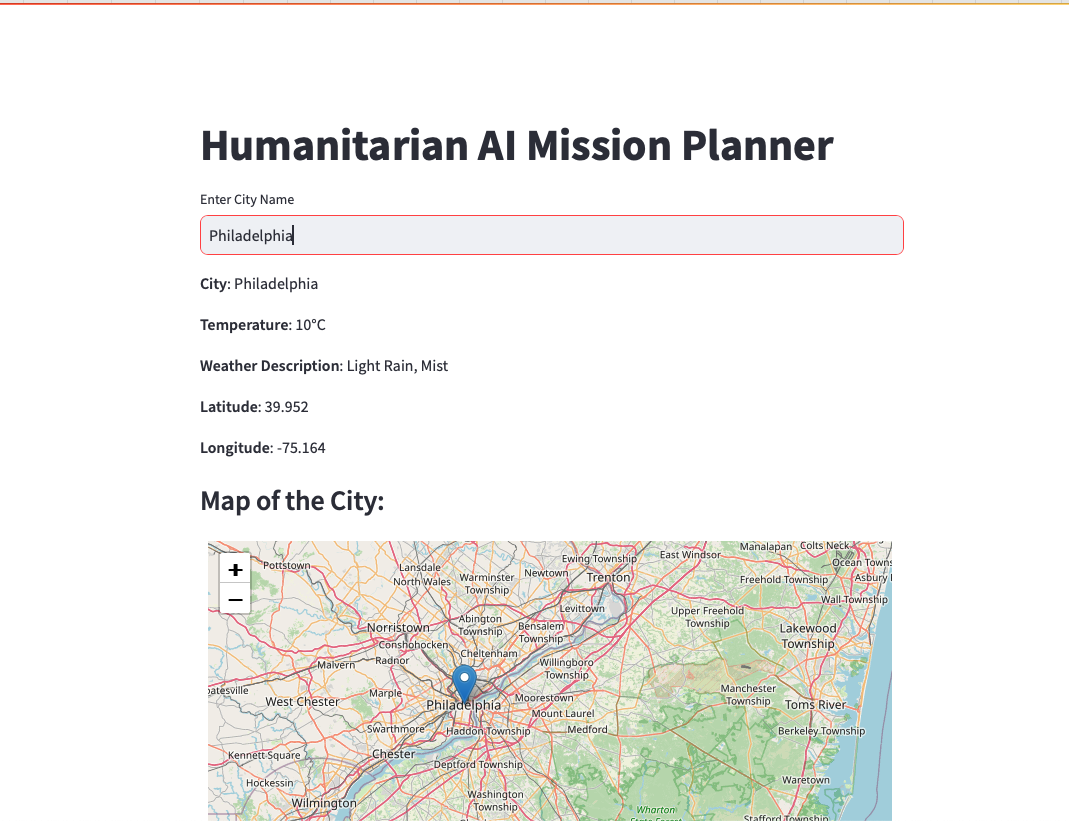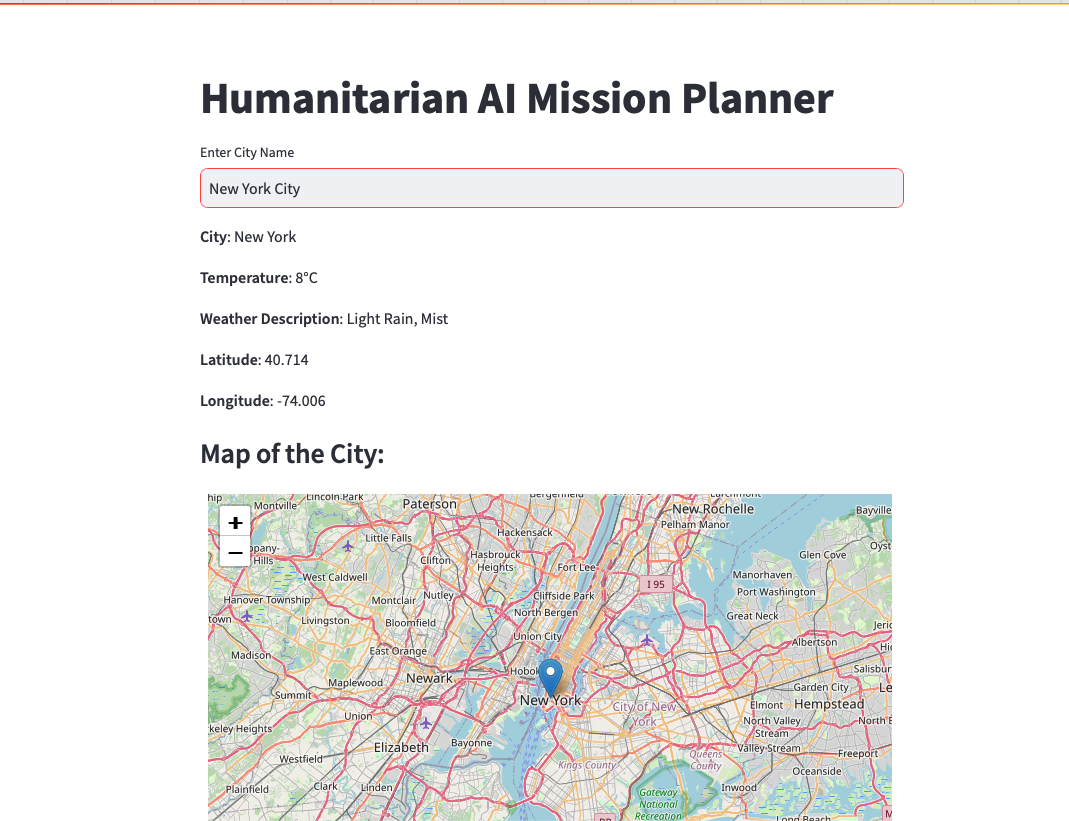🔧 Technologies & Tools Used:
- React: Building interactive UIs for seamless user experiences
- Tailwind CSS: Ensuring responsive, mobile-first design
- WeatherStack API: Real-time weather updates, crucial for disaster response scenarios
- RAG & FAISS Models: Training advanced AI models for fast data retrieval and disaster response optimization
- FastAPI & Hugging Face Transformers: For enhanced AI model deployment and integration
- Google Cloud Platform (GCP): Leveraging cloud services for scalable AI tools
- Python & JavaScript: Core languages for backend and frontend functionality
- Git/GitHub: Version control for efficient project management
⚡ Key Features Implemented:
- Disaster Management: Real-time SMS alerts for disaster zones, ensuring timely notifications to those in need
- Heatmap Visualizations: Identifying extreme temperature areas to aid in emergency preparedness
- AI-Powered Navigation: Future plans to integrate escape routes using real-time geospatial data
📚 AI & Machine Learning Journey:
I’m training RAG (Retrieval-Augmented Generation) and FAISS (Similarity Search) models to enhance disaster response. Drawing from my Oracle AI certification, I’ve gained expertise in:
- Machine Learning & Data Science Fundamentals
- AI Model Deployment & Scaling
- Natural Language Processing (NLP) and Text Analysis
- Cloud-based AI Integration with Oracle Cloud
This project is a blend of humanitarian aid and cutting-edge technology, and I’m excited to continue building tools that can support disaster relief efforts. While I’m unable to deploy live due to hosting costs, the project is fully functional locally and ready for further development.
🔗 Looking Forward:
I’m planning to incorporate AI-driven navigation and escape route optimization using GPS data. Stay tuned for more updates!


